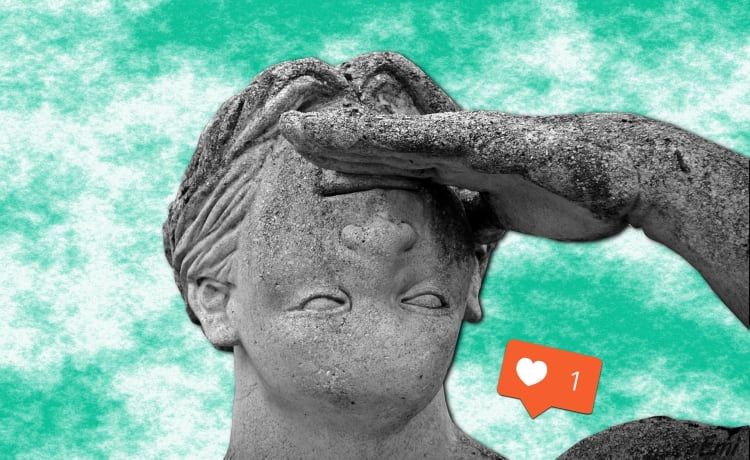At the beginning of the 20th century, a breath of fresh air blew over the world of art and culture, especially in France. André Derain and Henri Matisse lead from the summer of 1905, a new artistic movement called Fauvism.
This current based on the use of large areas of pure colors will exist until 1910. Discover how Fauvist painters left a lasting mark on the history of art.

1 - Simple definition of Fauvism

L'Estaque, turning road, André Derain, 1906
Born in the early 1900s, Fauvism is characterized by novelties in chromatic research. Fauvists used wide and juxtaposed flat areas of bright colors.
In 1905, this group of artists was considered revolutionary. Indeed, the aesthetic characteristics of Fauvism were totally innovative for the time. It was quite far from what was taught at the School of Fine Arts...
2 - An artistic movement structured around Matisse
The leader of the movement is none other than Henri Matisse. It all began when he spent the summer of 1904 in the company of Paul Signac. The latter teaches him the principles of the division of color and neo-impressionism.
Henri Matisse becomes very enthusiastic thanks to the knowledge delivered by his artist friend. In 1905, Matisse spends the summer with André Derain in Collioure in the South of France and passes on to him his ideas and knowledge on the use of color in painting.
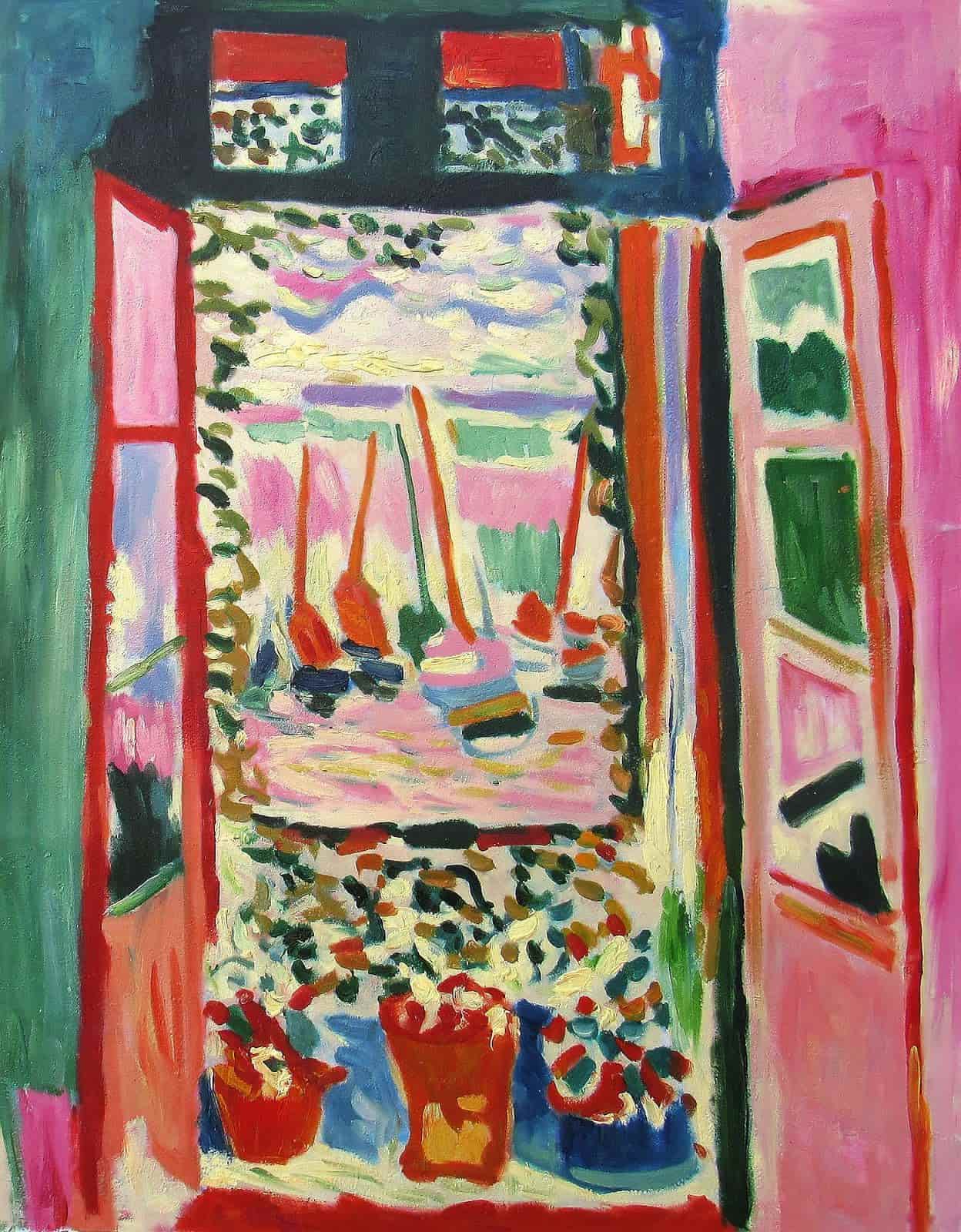
The open window in Collioure, Henri Matisse, 1905
A group of painters quickly takes shape around Henri Matisse and André Derain with notably Henri Manguin, Charles Camoin and Georges Braque. They all had an overflowing passion for the use of pure colors.
Discover Matisse on Art Shortlist
3 - The origin of the name
We owe the term "Fauvism" to the art critic Louis Vauxcelles. After his visit to the Salon d'Automne at the Grand Palais in Paris in 1905, Louis Vauxcelles published an article about a sculpture that was in the room where the group of painters was exhibiting, the famous Room 7.
The art critic declared: "In the center of the room, a child's torso and a small marble bust of Albert Marque, who models with a delicate science. The candor of these busts surprises in the middle of the orgy of pure tones: Donatello among the wild beasts". This is how the term "Fauvism" was taken up by the artists of the movement.
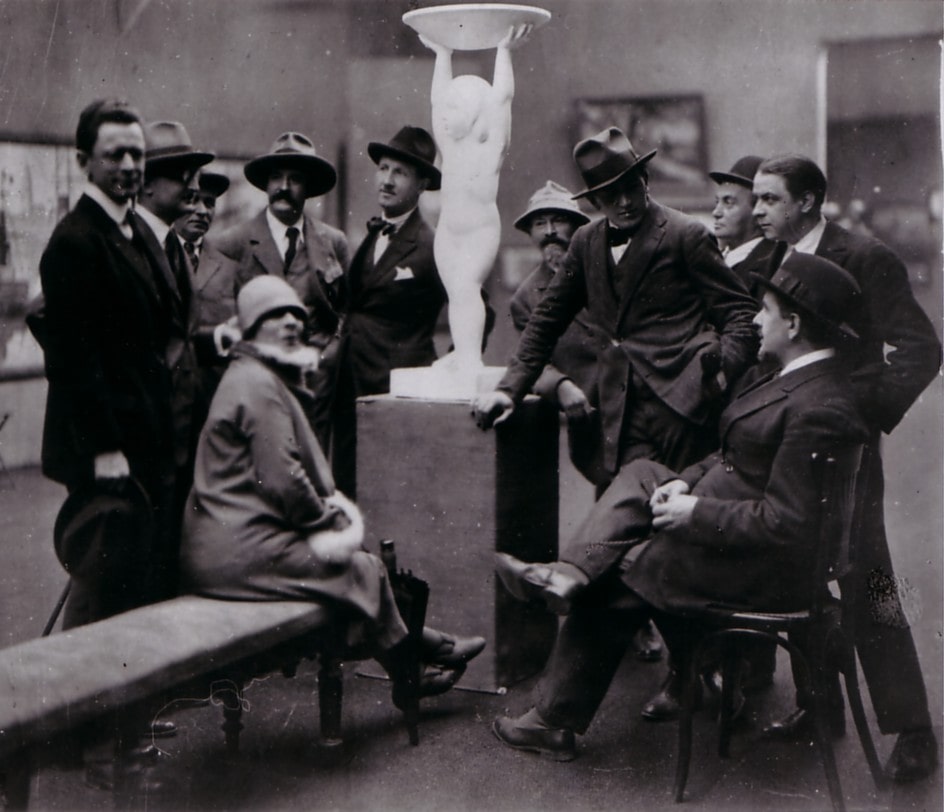
The Room 7 at the 1905 Salon
In 1939, Louis Vauxcelles published the book Le Fauvisme, in which he acknowledges that this comparison was inspired by an art critic who was discussing with Matisse during the 1905 Salon, this man would have used: "Donatello in the cage of the fauves" to qualify Room 7.
At the time of the Salon, the art critic Camille Mauclair considered that what these artists were doing was "a jar of paint thrown at the public's head". Let's put ourselves back in the context of the time, this journalist and critic used this expression because he had never been confronted with a painting like this one.
4 - The Reign of Color: The Founding Principles of Fauvism
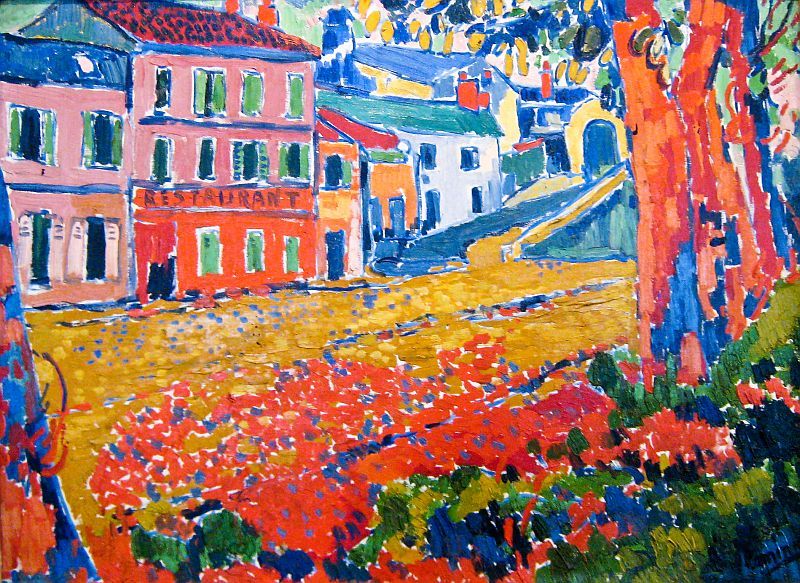
Restaurant de la Machine à Bougival, Maurice de Vlaminck, 1905
With the Fauves, color takes precedence over drawing and the reality of the representation. This way of considering painting will remain in Henri Matisse's mind almost all his life.
In a Fauvist canvas, color is always vivid and pure. It must produce electroshock for the spectator.
Concerning the representation, the painters of Fauvism focus on an arbitrary reality, far removed from the observable reality. With them, one forgets the usual colors to give way to surprising and lively colors.
Most of the paintings of Fauvism tend towards a simplification of forms. The pictorial touch of Fauvism is very different from one painter to another.
5 - The movement had many sources of inspiration
A - Neo-impressionism
Fauvism is the result of a very large number of artistic influences. Among them, we can mention that of neo-impressionism. The term neo-impressionism was coined by the illustrious art critic Félix Fénéon.
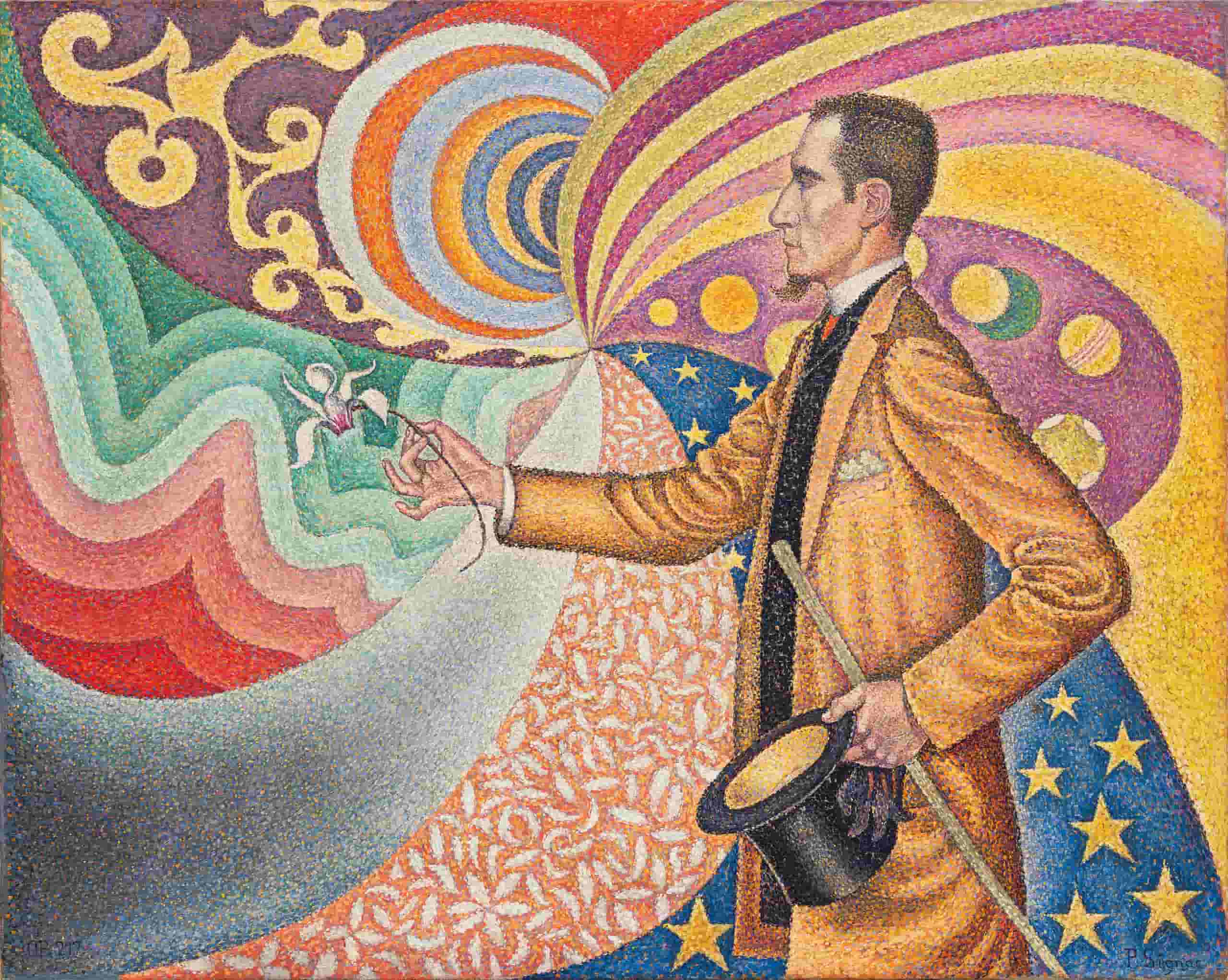
Portrait of Félix Fénéon, Paul Signac, 1890
This new impressionism refers to a pictorial technique which consists in not mixing pure colors on the palette or on the canvas, but in juxtaposing them by small touches.
The subtlety of this painting is that the mixing of colors occurs at a distance directly in the eye of the spectator, we then speak of "optical mixing". This movement was mainly led by Paul Signac and strongly influenced Fauvism.
B - Paul Gauguin and Vincent Van Gogh
The influence of Paul Gauguin was crucial for the birth of Fauvism. The painter painted color in flat tints. He died in 1903, two years before the birth of the movement.
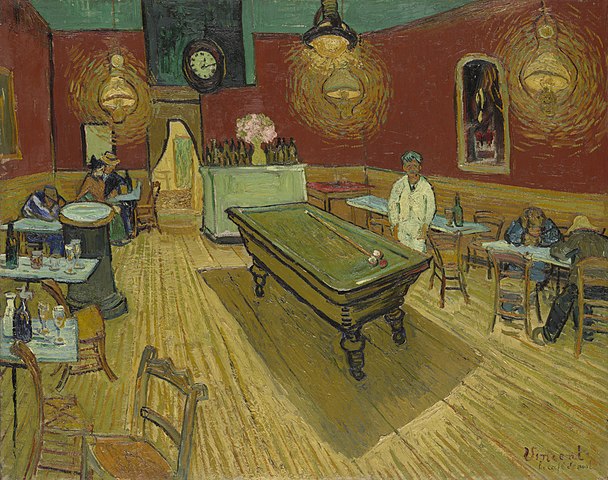
Le Café de nuit, place Lamartine, Arles, Vincent Van Gogh, 1889
Vincent Van Gogh's paintings strongly inspired the Fauves. The power of his colors notably fed the admiration of Maurice de Vlaminck and Albert Marquet, important representatives of Fauvism.
Read also: The evening when Vincent van Gogh cut off his ear
C - Cubism
At the same time as Fauvism was born, Cubism developed. The latter has a major point in common with Fauvism: its references to primitive arts from Africa and Oceania.

La Raie verte, Henri Matisse, 1905
We find this mutual inspiration mainly in the oil portraits on canvas, the faces have characteristics and similarities with African and Oceanian masks.
6 - The subjects of predilection of the Fauves
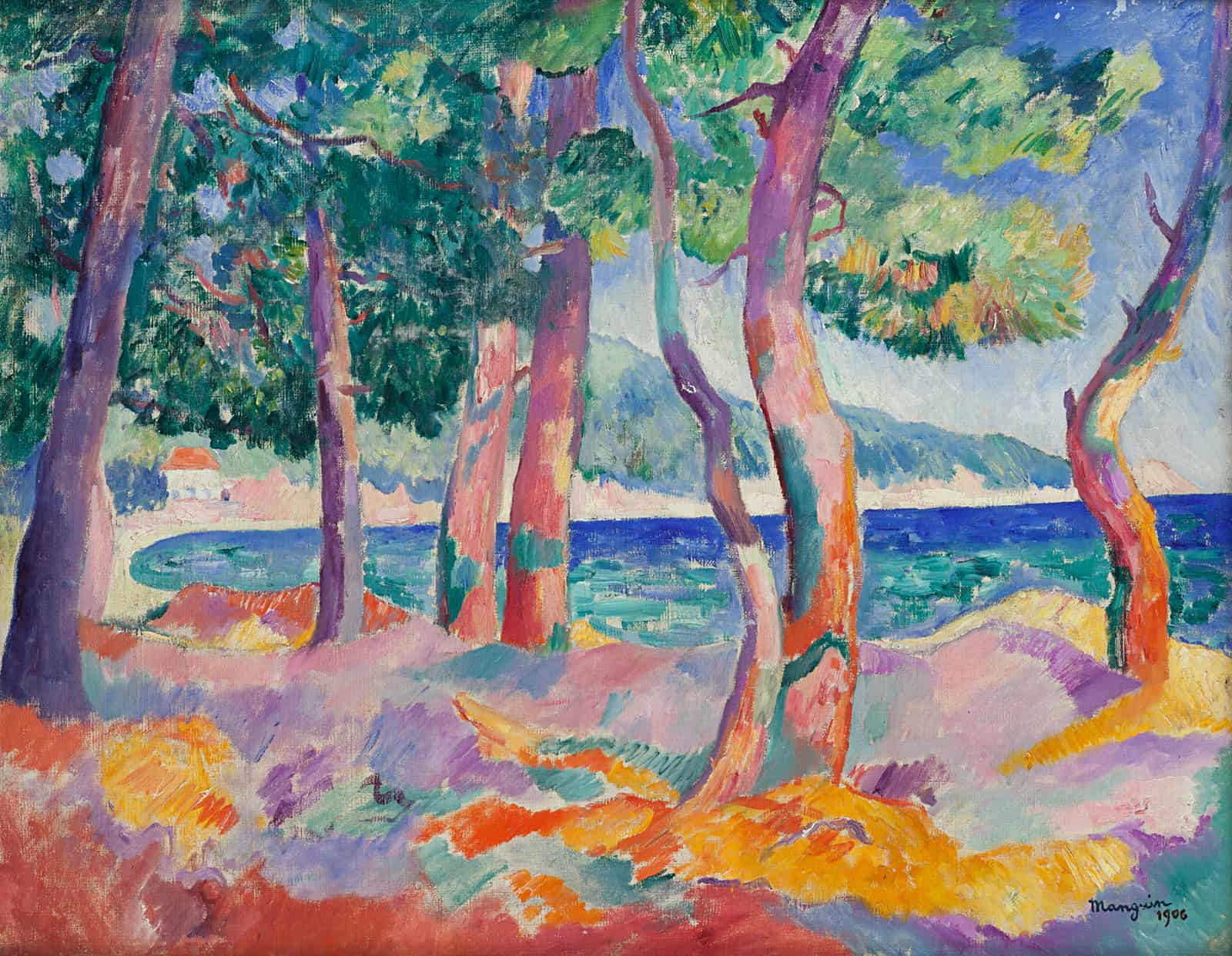
Pine forest at Cavalière, Henri Manguin, 1906
The subjects of the paintings of Fauvism are very varied. As for the Impressionists, nature is a subject of predilection, in particular the landscapes of the South of France. In the South, the artists sought inspiration from natural lights out of the ordinary.
The landscapes of l'Estaque, Collioure or Saint-Tropez are thus very present in the works of Henri Matisse, André Derain or Charles Camoin.
Other artists turned to different regions, for example, Raoul Dufy and Maurice de Vlaminck had a preference for landscapes of northern France.
The Fauves also liked to paint city views and close-ups of trees.
The last important subject for them: portraits. With this theme, which was basically classic, the Fauvists sought to modernize it, to take it to another aesthetic dimension.
7 - Fauvism had a considerable influence on art
Fauvism is without context one of the most important movements in painting in the 20th century, even if it lasted only 5 years (1905-1910). This experimental movement brought about new developments in art, artists began to question the role of color in painting and the representation of reality.
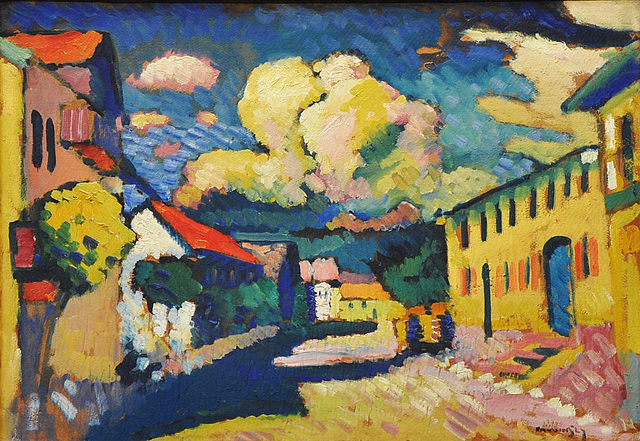
Murnau, Dorfstrasse, Vassily Kandinsky, 1908
Mainly present in France, Fauvism has successfully exported to Hungary, Spain, Belgium, Russia, Czech Republic, Poland and Italy. Its diffusion was rapid and accelerated by artists such as Kasimir Malevitch or Vassily Kandinsky. The latter was one of the founders, shortly after 1910, of the group Der Blaue Reiter (in English: The Blue Rider).
8 - An oil on fauve canvas by Matisse provoked an outcry
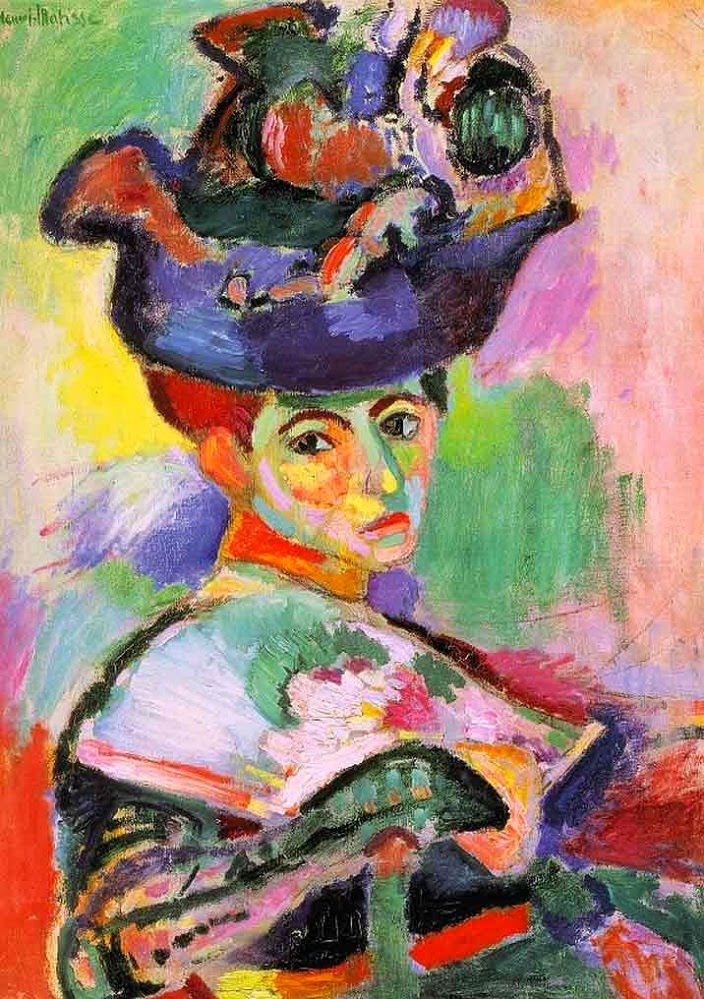
Woman with a hat, Henri Matisse, 1905
During the 1905 Salon in Paris, Henri Matisse presented his painting Woman with a hat, this painting caused a real scandal. The young woman represented is none other than his wife. This painting shocked mainly because of its freedom of composition and the many colors used. We find red, green, yellow on the face.
Today, this fauve painting has a special place in the art of Matisse and in the history of art. One more proof that Fauvism was an artistic movement ahead of its time.


